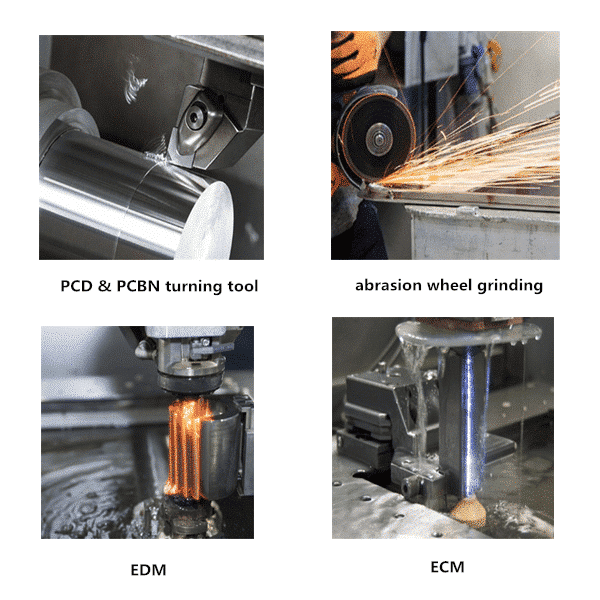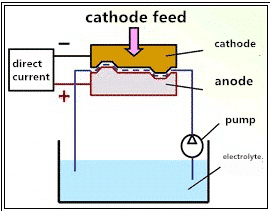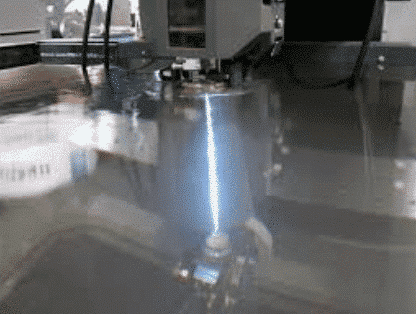How To Cut Tungsten Carbide Rod?
How To Cut Tungsten carbide rod?
We know that the hardness of the tool material itself must be higher than the hardness of the work piece to be machined. The Rockwell hardness of the cemented carbide is generally around HRA78 to HRA90. If you want to score or cut off tungsten carbide rods effectively, the following 4 ways may work out, which are abrasion wheel grinding, machining by super hard material, electrolytic machining(ECM), and electric discharge machining(EDM).

1. Cut carbide rod blank by wheel grinding
From now on, materials that can process carbide blanks mainly refer to poly-crystalline cubic boron nitride(PCBN)and poly-crystalline diamond(PCD).
The main materials for grinding wheels are green silicon carbide and diamond. Since grinding of silicon carbide will generate thermal stress exceeding the strength limit of the cemented carbide, surface cracks happens a lot, which makes silicon carbide not an ideal option to make surface that can be guaranteed.
Although the PCD grinding wheel is qualified complete all the tasks from roughing to finishing on carbide blanks, in order to reduce the loss of the grinding wheel, carbide blanks will be pre-processed by electric machining method, then do semi-finishing and fine-finishing by grinding wheel at last.
2. Cut carbide bar by milling and turning
Materials of CBN and PCBN, intended as a method to cut black metals with hardness, such as hardened steel and cast steel (iron). Boron nitrite is able to withstand high temperature’s influence (above 1000 degrees) and hold hardness at 8000HV.This property makes it equal to processing of carbide blanks, especially for those structural parts comprised by carbide core and steel casing under an interference fit.
Nevertheless, when the hardness of cemented carbide parts is higher than HRA90,totally out of boron nitrite’s league to cut, no more need to insist on PCBN and CBN tools.we can only turn to diamond PCD cutters as a substitute under this condition.
We still can’t lose sight of disadvantage of PCD inserts, its inability to obtain extremely sharp edges and the inconvenience to be fabricated with chipbreakers. Therefore, PCD can only be used for fine cutting of non-ferrous metals and non-metals, but can’t achieve ultra-precision mirror-cutting of carbide blanks, at least not yet.
3. Electrolytic Machining (ECM)
Electrolytic processing is the processing of parts by the principle that carbide can be dissolved in the electrolyte (NaOH). It ensures that the surface of the carbide workpiece doesn’t get heating up. And the point is that ECM’s processing speed and processing quality are independent of the physical properties of the material to be processed.

4. Electric discharge machining (EDM)
The principle of EDM is based on the electrical corrosion phenomenon between the tool and the workpiece (positive and negative electrodes) during the pulse spark discharge to remove excess carbide parts to achieve the predetermined processing requirements for the size, shape and surface quality of the workpiece. Only copper-tungsten electrodes and copper-silver electrodes can process carbide blanks.
In short, EDM does not utilize mechanical energy, does not depend on cutting forces to remove metal, but directly uses electrical energy and heat to remove the carbide part.
























